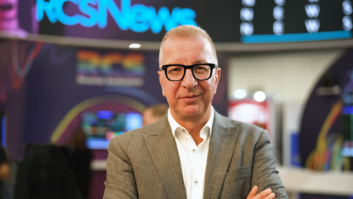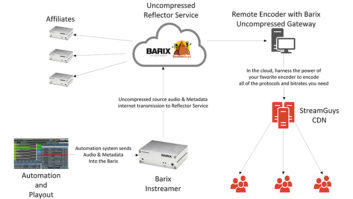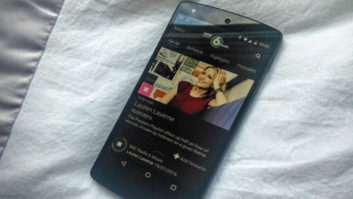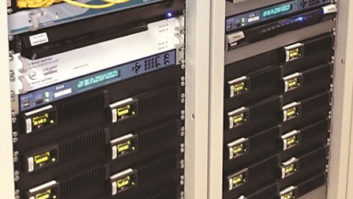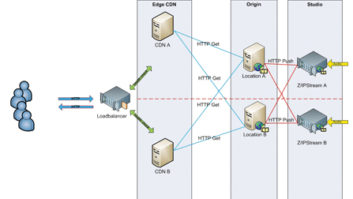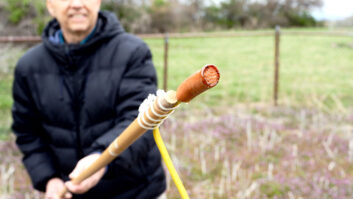The author is president of StreamS/Modulation Index LLC.
More than 20 years ago, delivery of media content on the internet was well on its way. Initially, audio was much easier to deliver than video because of its lower bandwidth requirements and the slow internet of the time. Yet video received most of the attention and technology investment, becoming a streaming power and feeding the cord-cutting that we know today.
Meanwhile, terrestrial radio audio streaming was viewed at first as a giveaway perk on station websites; it simply was not taken very seriously. Consequently the streams were based on amateur streaming audio protocols and were plagued with poor reliability, poor metadata, poor ad insertion, limited features and security issues.

This was not a professional approach. Unfortunately such streams remain the majority of what is available today, delivering a user experience that generates very low expectations.
It doesn’t need to be this way.
While all this was happening, huge advancements in mobile devices made delivery of reliable, feature-rich, high-quality audio streams possible.
Automobiles now take these mobile connections to their digital dashboards for an audio experience with unprecedented audio quality that tops any terrestrial or satellite broadcast, analog or digital, since there is no narrow audio bandwidth AM, pre-emphasis/de-emphasis FM, or poor audio codecs for digital and satellite radio to contend with.
Unlimited data plans are now the norm, so mobile streaming cost is no longer a consideration. Furthermore, these mobile devices are carried with everyone, everywhere they go. It is the new transistor radio — this time with billions of transistors!
Moving forward
Things have now really changed. Terrestrial audiences are shifting from over-the-air delivery to mobile devices and computer media delivery. A growing portion of your revenue now depends upon internet streaming. Listeners are purchasing expensive mobile devices, and they expect features and performance from them.
In order to reach these new devices and give this audience what they expect, new streaming methods and protocols are used. Old legacy MP3 streams no longer cut it. Just as video streaming has moved to segmented streaming to survive, audio can benefit from the same change, but it must be done correctly. HLS is just that protocol to deliver.
HLS (HTTP Live Streaming) is an advanced streaming protocol that works very differently than traditional legacy streaming. It uses segments or file chunks instead of a constant data stream, which ultimately causes reliability issues. Streaming using segments works like the internet works. Contrary to popular belief, the internet was never designed for persistent, constant data connections. So HLS leverages the way website content is delivered for a highly reliable streaming experience. This is the same tech that has fueled the unquestionable success of video cord-cutting.
HLS has much more to offer, and it solves all the shortcomings of legacy streaming:
- More professional features
- Lower deployment cost
- Lower operating cost
- Higher performance
- Higher availability
- Higher scalability
- Higher reliability
- Higher security
- Higher quality
However, since HLS is a broad specification, many details need to be right to get the best performance. Unfortunately, there are already a few content providers and distribution networks offering poor implementations of HLS delivery. These usually include some sort of transcoding of ICY streams, asynchronous metadata with embarrassing timing issues and no support of newer HLS fragmented MP4 (fMP4), which supports lossless and new xHE-AAC/USAC streams. Multi-channel surround streams are another consideration. So vet your CDNs and partners carefully to get the most value for you and your audience.
To make matters worse, most terrestrial radio stations do not have the technical resources or interest to support streaming properly. This new tech change paradigm is vital for the continued success of radio delivery. Instead, many have outsourced streaming to developers that have little to no media experience, with outdated technical skills and little creative understanding, including lack of professional audio processing techniques. This pretty much defines the great “Digital Divide” and must be overcome if terrestrial broadcast is to succeed in streaming. Often, sales and marketing have become involved in technical decisions, resulting in severe compromise of stream performance and quality. Targeted ads and pre-rolls are classic examples that ruin the streaming experience due to technical limitations, some of which cannot be overcome, and over-sold by content distribution networks. Just because this is sort of possible doesn’t mean it should be. It usually ends up as another embarrassment.
To achieve the best possible HLS, it is important avoid using legacy streaming encoders, and choose a true segmented streaming encoder. This outputs encoded segments with assembled synchronous metadata, which is always on time, and uploads and manages files and directories on the server with optional multiple synchronous bitrates.
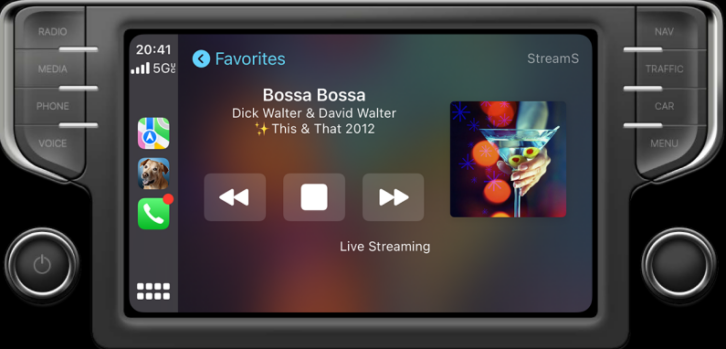
This provides on-time, now-playing metadata, precise commercial/content insertion and optional control commands for external software and hardware. A simple web server or cloud storage can be used to deliver live and file (on-demand/podcast) HLS. Special, expensive dedicated streaming servers are no longer required or even desired. This ultimately lowers streaming costs, increases reliability and quality, and allows static content to be delivered by the same server, if needed.
StreamS HLSdirect Live and File Encoders and Systems support all of this. They are enterprise, commercial-grade and based on open standards to reach the largest possible audiences.
In summary:
- Today’s audiences consume content on a plethora of devices, both fixed and mobile. They experience video streams that “just work” and they expect the same from audio streams. They have no patience for dropouts, disconnections, poor audio quality and error-ridden, mistimed “now playing” metadata.
- Yet many current audio streams still have these problems, along with sparse audiences. They have blown their “one chance to make a first impression.” It’s time to reinvent using better tools.
- The simplicity of old-school streaming is a trap. Without professional audio processing to provide broadcast-quality audio and direct HLS streaming to ensure uninterrupted reliability and rich metadata, audio streaming is a second-rate product destined to fail. Audiences expect better for their expensive, feature-rich capable devices and have an abundance of other entertainment choices.
- Adapt or die! There is no better audio entertainment return on investment than well-processed, modern HLS streaming. And, unlike terrestrial broadcasting, netcasting covers the world in hi-fi!
This article is excerpted from the Radio World ebook “The Ecosystem of Streaming.”





